The complex of parking lots and buildings running parallel to Columbus Boulevard, and contained loosely by Moore, Oregon and Water Streets, offers an array of big box mega-stores to give any suburban retail archipelago a run for its money. The Pennsport brand-name shopping Mecca boasts one of the city’s three five Target locations, meaning that you can buy your birthday cards, butter knives, breadmakers and bathing suits all in one convenient location.
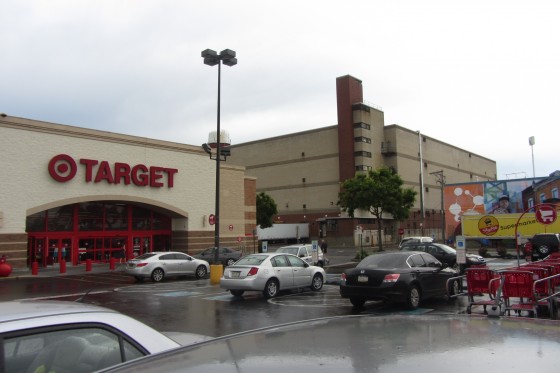
Target today
As recently as 50 years ago though, 1 Mifflin Street would have been your destination of choice for barrels.
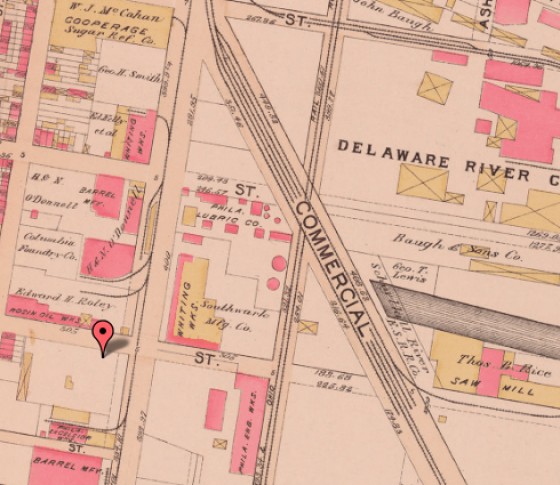
Map of the area in 1895
In the late 19th century, the Irish and Italian immigrant families that populated the Pennsport neighborhood were an engine for the Industrial Revolution. The image taken here from the G.W. Bromley’s 1895 Philadelphia Atlas shows a dense cluster of refineries, foundries, mills and rails where Marshalls, Lowes, ShopRite and Modell’s currently reside. The 1895 Atlas shows that the building just left of center held a number of occupants, with H & N O’Donnell Cooperage Company largest among them.
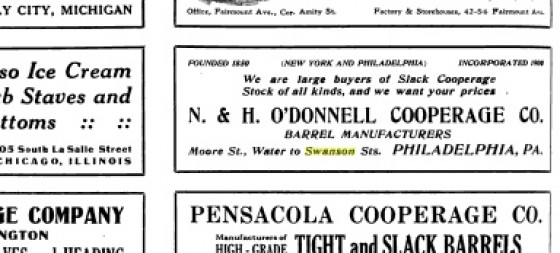
Ad for N & H O'Donnell Cooperage from back in the day
The barrel factory was founded by brothers Neil and Hugh O’Donnell, who according to the 1904 text The Packages, Vol. 7, “were among the largest handlers of slack cooperage stock in the country and are remembered by the trade with respect.” Though the brothers O’Donnell passed on in 1902 and 1904, a trade publication advertisement taken from the June 1912 issue of National Cooper’s Journal, shows the factory occupying the Moore St. side of the building.
By 1910, the Homer Brass Works Company had come to occupy the Mifflin side of the building, placing this leading manufacturer of ale and beer pumps where the Target entrance and check-out registers now stand. This was in turn, replaced by United Steel Barrel Co. Now completely devoted to the purposes of barrel production and distribution, the building had come to play an important role in supporting Allied efforts even before the U.S. entered World War II combat. According to an article from the Reading Eagle, the plant burst into flames on October 4th, 1941. And in the great tradition of wartime reporting, the article generates just a touch of hometown paranoia, remarking that “the company has been busy on defense orders and authorities did not discount the possibility of sabotage.”
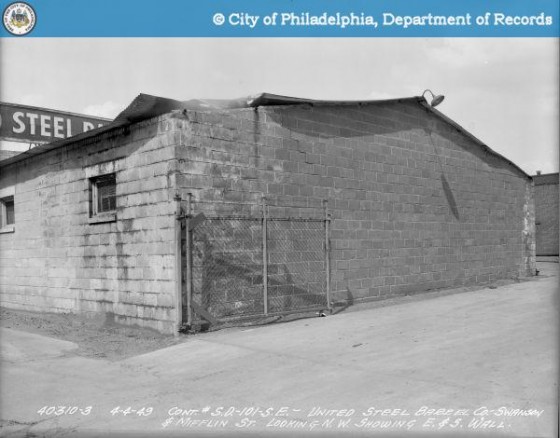
Barrel factory in 1949
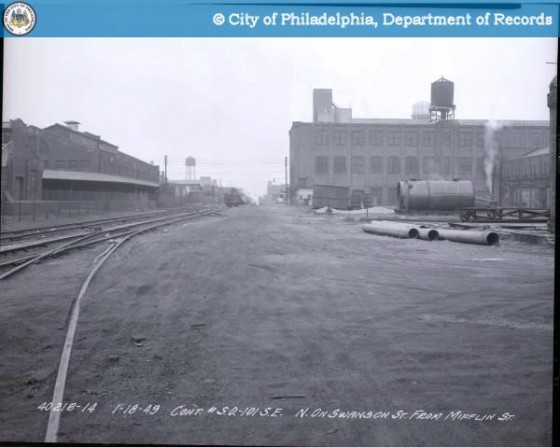
Looking up Swanson St. in 1949, from Mifflin St.
The Department of Records photos above show the structure to the left in 1949, several decades before the arrival of Target. The Continental Distribution Warehouse (now Shoprite) is seen to the right. The train tracks running between them on Swanson Street remain a constant threat to your tires even today.
–David Tomar

Leave a Reply